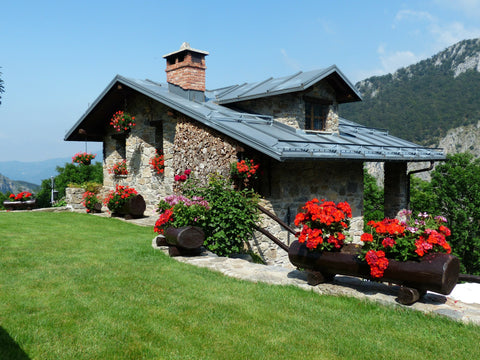Your house is your sanctuary and you need to protect it from harm. In Australia alone, termites cost as much as 800 million dollars in property damage every year.
It is called a "silent destroyer" as they can cause a tremendous amount of damage to any wooden structure like furniture and walls.
What are the stages of a termite infestation?
As social insects, subterranean termites live in colonies or nests in the soil. They live in a highly organised caste system in an underground termite colony. Each colony consists of the alates (winglike structures) and the three forms or castes: reproductives, workers and soldiers.
Termite Colony Structure
A pair of alates generates their own termite colony. In here, the queen can lay millions of eggs over her lifetime. On average, the queen can lay 30,000 eggs in a day. Since the queen cannot move, the entire termite nest is built around her, therefore providing nutrients for her offspring.

How many termites are in a colony?
A colony of termites can populate from thousands of termites to millions, depending on the species and age of the colony. It is common to find two or more termite colonies competing for food around your property.
Reproductives or "swarmers" can be winged (primary) or wingless (secondary). When the reproductives mature, they emerge from the colony to grow new colonies.
The workers, on the other hand, are responsible for feeding the colony, which they do by regurgitation, as the other termites cannot feed themselves. Workers forage for food every day by building tunnels and mud tubes from the colony to the food they find. Once they discover food, they mark it with pheromone. Pheromone is the chemical they produce to communicate with each other.
Lastly, the soldiers' job is to protect the colony from invaders like ants.
Each termite has their specific role and they depend upon one another for survival. Understanding how many termites in a colony exist helps you grasp the scale of potential damage – mature colonies can contain millions of individuals working 24/7.
How do termites enter a house?

Termites can enter your home through an opening as small as 0.8 millimetres. If there is a settlement crack, loose mortar joint, a small space around the drainpipe or a crack in your foundation, they're in and the damage begins. Swarming of winged adult termites is a typical early signs of termite infestation. Discovering a termite colony in house structures requires careful inspection of vulnerable areas.
How to Treat Termite Infestation?
To protect your home from being infested by termites and to actually save money, hiring terminators should not be necessary. There are useful steps you can do on your own.
How to Find Termite Colony
Spot the infestation. How to spot termite infestation? Understanding what a termite colony looks like and knowing how to locate termite colony activity are essential. The main signs that you have termites are:
The presence of small round holes on the tree. Insects gnaw through tunnels, build passages and eat at the same time. Holes indicate the presence of voids that remain after pests have passed.
- Galleries. If a lot of cracks suddenly appeared on one of the pieces of furniture, then try picking this place. When infected, this will be easy. The middle of the stick or leg will be pitted with passages.
- Rubbish. These are the waste products of pests. Such heaps show where unwanted neighbours have recently visited. Nearby you will definitely find holes or passages.
- Void. If there are signs of the possible presence of pests, try tapping on wooden surfaces. In places of insect settlement, sounds characteristic of voids will be heard.
Colony Termite Control Solutions
Preventive maintenance: Keep firewood, lumber, paper or other debris away from the ground outside your house, including tree stumps, plant cover and mulch. Eliminate moisture problems and seal all portals of possible entry.
Fortify the defences: Create a barrier around the outside of your home using colony killer termite bait stations with stakes 1.5 to 3 metres apart around your house. These bait stations provide effective colony termite control by targeting the entire colony rather than just individual termites. Check these stakes regularly and replenish as required.
Using colony killer termite bait systems eliminates the need for harsh chemical treatments whilst effectively controlling the entire termite population. This method of colony termite control works by having worker termites carry the bait back to the colony, ultimately destroying it from within.











